- Home
- Shelby Foote
The Civil War: A Narrative: Volume 2: Fredericksburg to Meridian Page 10
The Civil War: A Narrative: Volume 2: Fredericksburg to Meridian Read online
Page 10
Sherman did not wait for morning. Impatient as always, he rode straight over, a tall red-haired man with a fidgety manner, concave temples, glittering hazel eyes, and a scraggly, close-cropped beard. “I never saw him but I thought of Lazarus,” one observer was to write. A chain smoker who, according to another witness, got through each cigar “as if it was a duty to be finished in the shortest possible time,” he was forty-two, two years older than the comparatively stolid Grant and once his military senior, too, until Donelson brought the younger brigadier fame and a promotion, both of which had been delayed for Sherman until Shiloh, where he fought under—some said, saved—his former junior. He felt no resentment at that. In fact, he saw Grant as “the coming man in this war.” But he had never had better reason for this belief than now at Oxford, when he was closeted with him and heard his plan for the sudden capture of Vicksburg with the help of a kidnaped army.
As usual in military matters, geography played a primary part in determining what was to be done, and how. Various geographic factors made Vicksburg an extremely difficult nut to crack. First there was the bluff itself, the 200-foot red-clay escarpment dominating the hairpin bend of the river at its base, unscalable for infantry and affording the guns emplaced on its crest a deadly plunging fire—as Farragut, for one, could testify—against whatever naval forces moved against or past it. As for land forces, since they could not scale the bluff itself, even if they had been able to approach it from the front, their only alternative was to come upon it from the rear; that is, either to march overland down the Mississippi Central to Grenada, as Grant was now attempting to do, and thence along the high ground lying between the Yazoo and the Big Black Rivers, or else debark from their transports somewhere short of the town and make a wide swing east, in order to approach it from that direction. However, the latter was nearly impossible, too, because of another geographic factor, the so-called Yazoo-Mississippi alluvial delta. This incredibly fertile, magnolia-leaf-shaped region, 200 miles in length and 50 miles in average width, bounded east and west by the two rivers that gave it its compound name, and north and south by the hills that rose below and above Memphis and Vicksburg, was nearly roadless throughout its flat and swampy expanse, was subject to floods in all but the driest seasons, and—except for the presence of a scattering of pioneers who risked its malarial and intestinal disorders for the sake of the richness of its forty-foot topsoil, which in time, after the felling of its big trees and the draining of its bayous, would make it the best cotton farmland in the world—was the exclusive domain of moccasins, bears, alligators, and panthers. It was, in short, impenetrable to all but the smallest of military parties, engaged in the briefest of forays. An army attempting to march across or through it would come out at the other end considerably reduced in numbers and fit for nothing more strenuous than a six-month rest, with quinine as the principal item on its diet. Anyhow, Grant did not intend to try it that way. He had his eye fixed on the mouth of the Yazoo, twelve miles above Vicksburg, and it seemed to him that an amphibious force could ascend that river for a landing on the southeast bank, which would afford the troops a straight shot at the town on the bluff. True, there were hills here, too—the Walnut Hills, they were called, the beginning of the long ridge known as the Chickasaw Bluffs, which lay along the left bank of the Yazoo, overlooking the flat morass of the delta—but they were by no means as forbidding as the heights overlooking the Mississippi, a dozen miles below. It was Grant’s belief that determined men, supported by the guns of the fleet, could swarm over these comparatively low-lying hills, brushing aside whatever portion of the weakened garrison tried to stop them, and be inside the town before nightfall of the day they came ashore.
That was why he had sent for Sherman, who seemed to him the right man for the job. Sherman happily agreed to undertake it, and Grant gave him his written orders that same evening. He was to return at once to Memphis with one of his three divisions, which he would combine with McClernand’s volunteers, already waiting there. This would give him 21,000 troops, and to these would be added another 12,000 to be picked up at Helena on the way downriver, bringing his total strength to four divisions of 33,000 men, supported by Porter’s fleet. Grant explained that he himself would continue to bristle aggressively along the line of the Yalobusha “so as to keep up the impression of a continuous move,” and if Pemberton fell back prematurely he would “follow him even to the gates of Vicksburg,” in which event he and Sherman would meet on the Yazoo and combine for the final dash into the town. Delighted with the prospect, Sherman was off next day for Memphis, altogether mindful of the need for haste if he was to forestall both McClernand and Pemberton. “Time now is the great object,” he wired Porter. “We must not give time for new combinations.”
He did not make it precisely clear whether these feared “combinations” were being designed in Richmond or in Washington—whether, that is, they threatened the successful prosecution of Grant’s public or his private war. By mid-December, however, Grant’s worries in regard to the latter were mostly over. Sherman was in Memphis, poised for the jump-off, and McClernand’s men had become organic parts of the army the redhead was about to take downriver. There was still one danger. McClernand outranked him; which meant that if he arrived before Sherman left, he would assume command by virtue of seniority. But Grant considered this unlikely. Sherman was thoroughly aware of the risk and would be sure to avoid the consequences. Besides, with Halleck’s telegram in his files as license for the kidnap operation, Grant felt secure from possible thunder from on high. “I doubted McClernand’s fitness,” he later wrote, “and I had good reason to believe that in forestalling him I was by no means giving offense to those whose authority to command was above both him and me.”
The arrival of a telegram from Washington on the 18th, instructing him to divide his command (now and henceforward to be called the Army of the Tennessee) into four corps, with McClernand in charge of one of those assigned to operations down the Mississippi—which meant of course that, once he joined it, he would be in charge of the whole column by virtue of his rank, unless Grant himself came over and took command along the river route—did not disturb the plans Grant had described in a letter home, three days ago, as “all complete for weeks to come,” adding: “I hope to have them all work out just as planned.” Sherman was ready to leave, he knew, and in fact would be gone tomorrow, before McClernand could possibly arrive from Illinois. Blandly he wired his new subordinate word of the Washington order, which dispelled McClernand’s illusion that his command was to be an independent one. Instructing him to come on down to Memphis, Grant even managed to keep a straight face while remarking: “I hope you will find all the preliminary preparations completed on your arrival and the expedition ready to move.”
McClernand found no such thing, of course. All he found when at last he reached Memphis on December 29 were the empty docks his men had departed from, ten days ago under Sherman, and Grant’s telegram, delayed eleven days in transmission. Nor did Grant’s own plans, “all complete for weeks to come,” work out as he had intended and predicted. In both cases—entirely in the former and largely in the latter—the cause could be summed up in three two-syllable nouns: Nathan Bedford Forrest.
“He was the only Confederate cavalryman of whom Grant stood in much dread,” a friend of the Union general’s once remarked. Then he told why. “Who’s commanding?” Grant would ask on hearing that gray raiders were on the prowl. If it was some other rebel chieftain he would shrug off the threat with a light remark; “but if Forrest was in command he at once became apprehensive, because the latter was amenable to no known rules of procedure, was a law unto himself for all military acts, and was constantly doing the unexpected at all times and places.”
Grant’s apprehensions were well founded as he looked back over his shoulder in the direction of his main supply base at Columbus, Kentucky; or, more specifically, since the far-off river town was adequately garrisoned against raiders, as he traced on the map th
e nearly two hundred highly vulnerable, not to say frangible, miles of railroad which were his sole all-weather connection with the munitions and food his army in North Mississippi required if it was to continue to shoot and eat. Without that base and those railroads, once he had used up the reserve supplies already brought forward and stored at Holly Springs, his choice would lie between retreat on the one hand and starvation or surrender on the other. Just now, moreover, the reason his apprehensions were so well founded was that Forrest was looking—and not only looking, but moving—in that direction, too: as Grant learned from a dispatch received December 15 from Jackson, Tennessee, a vital junction about midway of his vulnerable supply line. “Forrest is crossing [the] Tennessee at Clifton,” the local commander wired. Four days later, Jackson itself was under attack by a mounted force which the Federal defenders estimated at 10,000 men, with Forrest himself definitely in charge.
Pemberton had begun it by appealing to Bragg in late November for a diversion in West Tennessee, which he thought might ease the pressure on his front, and Bragg had responded by sending Forrest instructions to “throw his command rapidly over the Tennessee River and precipitate it upon the enemy’s lines, break up railroads, burn bridges, destroy depots, capture hospitals and guards, and harass him generally.” Receiving these orders December 10 at Columbia, forty miles south of Nashville, Forrest was off next day with four regiments of cavalry and a four-gun battery, 2100 men in all, mostly recruits newly brigaded under his command and mainly armed with shotguns and flintlock muskets. Four days later and sixty miles away, he began to cross the Tennessee at Clifton on two flatboats which he had built for the emergency and which he afterwards sank in a nearby creek in case he needed them coming back. Deep in enemy country, with the bluecoats warned of his crossing while it was still in progress, he encountered on the 18th, near Lexington, two regiments of infantry, a battalion of cavalry, and a section of artillery, all under Colonel Robert G. Ingersoll, who had been sent out to intercept him. The meeting engagement was brief and decisive. Falling back on the town, Ingersoll took up what he thought was a good defensive position and was firing rapidly with his two guns at the rebels to his front, when suddenly he “found that the enemy were pouring in on all directions.” The fight ended quite as abruptly as it had begun. “If he really believed that there is no hell,” one grayback later said of the postwar orator-agnostic, “we convinced him that there was something mightily like it.” Captured along with his two guns and 150 of his men, while the rest made off “on the full run” for Jackson, twenty-five miles to the west, Ingersoll greeted his captors with aplomb: “Is this the army of your Southern Confederacy for which I have so diligently sought? Then I am your guest until the wheels of the great Cartel are put in motion.”
Following hard on the heels of the fugitives, who he knew would stumble into Jackson with exaggerated stories of his strength, Forrest advanced to within four miles of the place and began to dispose his “army” as if for assault, maneuvering boldly along the ridge-lines and beating kettledrums at widely scattered points to keep up the illusion, or, as he called it, “the skeer.” It worked quite well. Convinced that he was heavily outnumbered, though in fact he had about four times as many troops inside the town as the Confederates had outside it, Brigadier General Jeremiah Sullivan prepared to make a desperate house-to-house defense. All next day the rebel host continued to gather, waxing bolder hour by hour. When dawn of the 20th showed the graybacks gone, Sullivan took heart and set out after them, pushing eastward—into emptiness, as it turned out, for Forrest had swung north. Today in fact, having thrown the Federal main body off his trail, he began in earnest to carry out his primary assignment, the destruction of the sixty miles of the Mobile & Ohio connecting Jackson and Union City, up near the Kentucky line. The common complaint of army commanders, that cavalry could seldom be persuaded to get down off their horses for the hard work that was necessary if the damage to enemy installations was to be more than temporary, was never leveled against Forrest’s men. Besides forcing the surrender of the several blue garrisons in towns along the line, they tore up track, burned crossties and trestles, and wrecked culverts so effectively that this stretch of the M&O was out of commission for the balance of the war. In Union City on Christmas Eve, resting his troopers after their four-day rampage with axes and sledges, Forrest reported by courier to Bragg that, at a cost so far of 22 men, he had killed or captured more than 1300 of the enemy, “including 4 colonels, 4 majors, 10 captains, and 23 lieutenants.” That he considered this no more than a respectable beginning was shown by his closing remark: “My men have all behaved well in action, and as soon as rested a little you will hear from me in another quarter.”
His problem now, after paroling his captives and sending them north to Columbus to spread bizarre reports of his strength—reports that were based on bogus dispatches, which he had been careful to let them overhear while their papers were being made out at his headquarters—was, first, what further damage to inflict and, second, how to get back over the river intact before the various Federal columns, still chasing phantoms all over West Tennessee, converged on him with overwhelming numbers. The first was solved on Christmas Day, when he marched southeast out of Union City and spent the next two days administering to the Nashville & Northwestern the treatment already given the M&O. Reaching McKenzie on the 28th in an icy, pelting rain, he headed south across the swampy bottoms of the swollen Obion River, and now began his solution of the second part of his problem. Instead of trying to make a run for the Tennessee, with the chance of being caught half-over and hamstrung, he decided to brazen out the game by thrusting in among the Federals attempting a convergence, and by vigorous blows, struck right or left at whatever came within his reach, stun them into inaction or retreat, while he continued his movement toward the security of Middle Tennessee.
The fact was, he had little to fear from the direction of Columbus. Brigadier General Thomas A. Davies, commander of the 5000 bluecoats gathered there, had been so alarmed by demonstrations within ten miles of the town on Christmas Eve, as well as by the parolees coming in next day with reports of 40,000 infantry on the march from Bragg, that he had spiked the guns at New Madrid and Island Ten, throwing the powder into the Mississippi to keep it out of rebel hands, and now was concentrating everything in order to protect the $13,000,000 worth of supplies and equipment being loaded onto steamboats at the Columbus wharf for a getaway in case Forrest broke his lines. Conditions were scarcely better, from the Union point of view, 250 miles downriver at Memphis, where the citizens had become so elated over rumors that their former alderman was coming home, along with thousands of his troopers, that Major General S. A. Hurlbut, perturbed by their reaction and the fact that his garrison was down to a handful since the departure of Sherman, telegraphed Washington: “I hold city by terror of heavy guns bearing upon it and the belief that an attack would cause its destruction.” Grant, however, was of a different breed. He was thinking not of his safety, but of the possible destruction of Forrest and his men. “I have directed such a concentration of troops that I think not many of them will get back to the east bank of the Tennessee,” he informed a subordinate. Nor was this opinion ill-founded. One superior blue force was coming south from Fort Henry, another north from Corinth, and both were now much closer to the Clifton crossing than Forrest was. So, for that matter, were Jere Sullivan and his three brigades, two of which were back by now from their goose chase east of Jackson and headed north. Undiscouraged by his lack of luck so far, he believed he knew just where the raiders were, and he intended to bag them. “I have Forrest in a tight place,” he wired Grant on December 29. “My troops are moving on him from three directions, and I hope with success.”
Forrest was indeed in a tight place, and that place was about to get tighter. Emerging from the flooded Obion bottoms, which he had crossed by an abandoned causeway, he paused on December 30 to let Sullivan’s unsuspecting lead brigade go by him, then resumed his march past Huntingdon and
toward Clarksburg, nearing which place on the morning of the last day of the year he encountered the other brigade, forewarned and drawn up to meet him at Parker’s Crossroads. By way of precaution he had sent four companies to guard the road from Huntingdon and warn him in case the lead brigade turned back, and now, secure in the belief that his rear was well protected against surprise, he settled down to a casualty-saving artillery duel with the blue force to his front. It lasted from about 9 o’clock until an hour past noon, by which time he had captured three of the enemy guns and 18 wagonloads of ammunition and had driven the skirmishers back on their supports. He had in fact ceased firing, in response to several white flags displayed along the Union line, and was sending in his usual demand for “unconditional surrender to prevent the further effusion of blood,” when an attack exploded directly in his rear. For the first last only time in his career, Forrest was completely surprised in battle. His reaction was immediate. Quickly resuming the fight to his front, he simultaneously charged rearward, stalling the surprise attackers with blows to the head and flanks, and withdrew sideways before his opponents recovered from the shock. It was smartly done—later giving rise to the legend that his response to a staff officer’s flustered question, “What shall we do? What shall we do?” was: “Charge both ways!”—but not without sacrifice. The captured guns were abandoned, along with three of his own, for lack of horses to draw them, as well as the 18 wagonloads of ammunition. Three hundred men who had been fighting afoot were taken, too, while trying to catch their mounts, which had bolted at the sudden burst of gunfire from the rear. Sullivan, coming up from behind Jackson with his third brigade next day, was elated. “Forrest’s army completely broken up,” he wired Grant. “They are scattered over the country without ammunition. We need a good cavalry regiment to go through the country and pick them up.”

 Chickamauga and Other Civil War Stories
Chickamauga and Other Civil War Stories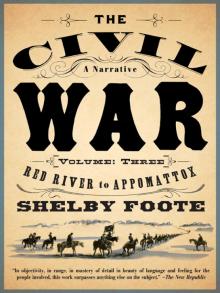 The Civil War: A Narrative: Volume 3: Red River to Appomattox
The Civil War: A Narrative: Volume 3: Red River to Appomattox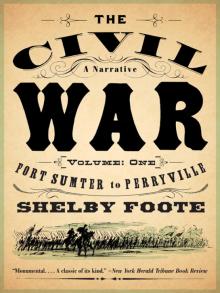 The Civil War: A Narrative: Volume 1: Fort Sumter to Perryville
The Civil War: A Narrative: Volume 1: Fort Sumter to Perryville Jordan County
Jordan County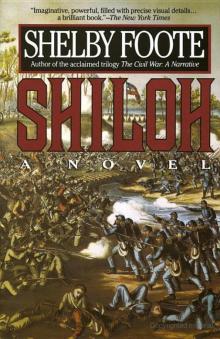 Shiloh
Shiloh Love in a Dry Season
Love in a Dry Season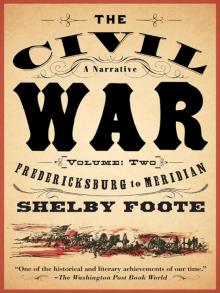 The Civil War: A Narrative: Volume 2: Fredericksburg to Meridian
The Civil War: A Narrative: Volume 2: Fredericksburg to Meridian Chickamauga
Chickamauga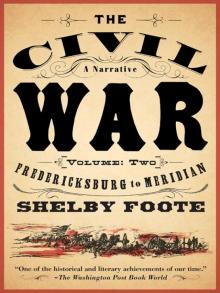 The Civil War: A Narrative: Fredericksburg to Meridian
The Civil War: A Narrative: Fredericksburg to Meridian